 Event
EventPhotons are particles of electromagnetic radiation. They do not carry any electric charge and therefore do not produce a track in the central part of our detector. However, they do carry energy. The energy of a photon is completely absorbed by the electromagnetic calorimeter. (Therefore, no energy is seen in the hadronic calorimeter.)
Here is an example event containing a high energy photon:
 Event
Event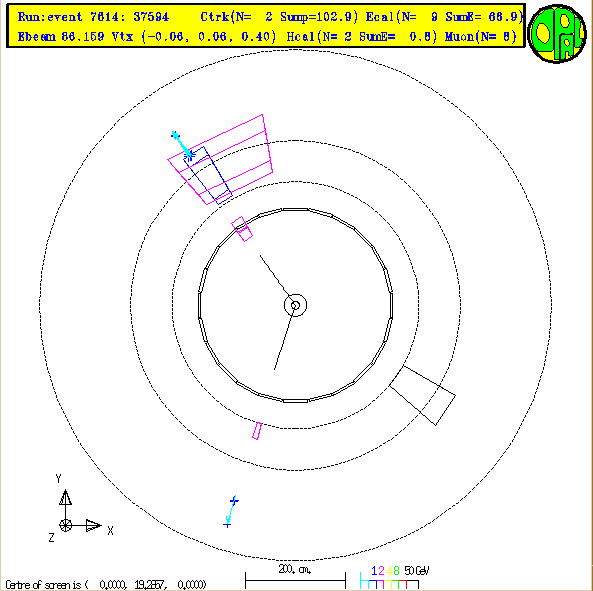
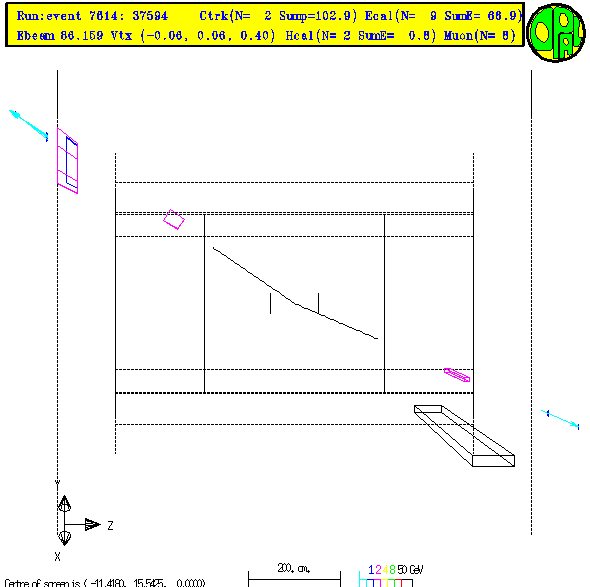
We can represent such an event by means of simple diagrams.
The first diagram shows a photon being radiated one of the outgoing muons:
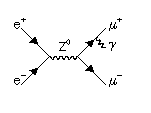
The second diagram shows a photon being radiated one of the incoming electrons:
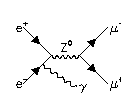
We will refer to such events as:

Here is an example quark-antiquark event containing a high energy photon,
which we represent by the following diagrams:
 Event
Event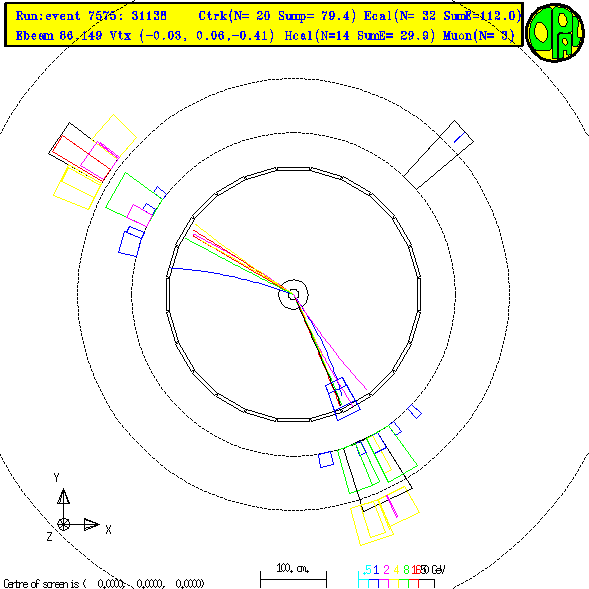
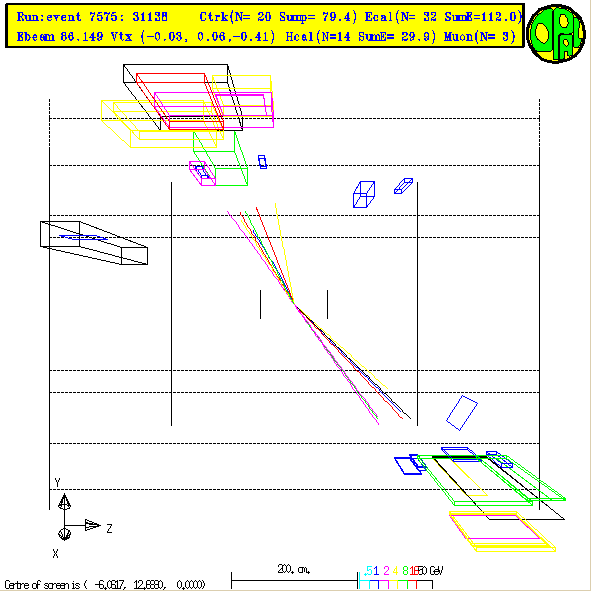
We will refer to such events as:

The circulating beams of electrons and positrons pass through our experiment inside a tube that runs along the axis of the cylindrical detector. We do not have any particle detectors inside this tube. Unfortunately, this means that if a photon is radiated along the direction of the circulating beams then it can pass out of the experiment without being detected.
Here is a side-on picture of an event where this has happened:

Notice that the µ- and µ+ are no longer
back-to-back as they were in straightforward
 events.
events.
Do you remember the pictures of
example
 events?
Notice how similar the
events?
Notice how similar the
 and
and
 events appear when viewed side-on.
events appear when viewed side-on.
Luckily we can usually tell the difference between the two types of events
when we look at them end-on.
Here is the end-on picture of the
 event with a photon escaping along the beam pipe we were looking at before.
event with a photon escaping along the beam pipe we were looking at before.

Notice that in the end-on view the µ- and µ+ are back-to-back! (This is because of conservation of momentum. See if you can work it out! Remember the initial electron and positron start off with equal and opposite momenta.)
Remember that the
 events were not back to back
in the end-on view.
events were not back to back
in the end-on view.
 Next take a look at some high energy gluons in events containing a
quark-antiquark pair.
Next take a look at some high energy gluons in events containing a
quark-antiquark pair.
 Back to general section on "How to Identify Some Slightly More Complicated
Types of Event".
Back to general section on "How to Identify Some Slightly More Complicated
Types of Event".